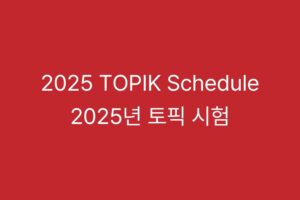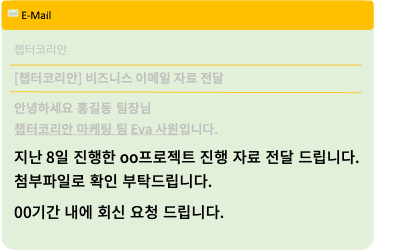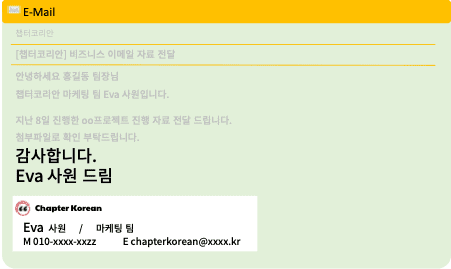
Welcome! Writing business emails in Korean is a crucial skill in the global work environment, especially when communicating with Korean companies. Effective and professional email communication not only facilitates smooth interactions but also reflects your professionalism. In this blog post, “How to Write Email in Korean: 7 Important Tips,” we aim to share essential advice for crafting business emails in Korean, covering everything from greetings to sign-offs.
Additionally, for those new to writing emails in Korean or looking to enhance their skills to a more professional level, we briefly introduce the “1:1 Business Korean Lessons.” These personalized lessons are tailored to your business goals and needs, offering guidance from professional Korean language instructors. Not only will you learn how to compose emails, but you will also gain insights into Korean business etiquette and culture, further enriching your language proficiency for business contexts.
Through this post, we hope you’ll learn effective strategies for composing emails in Korean, boosting your confidence in business communication. Writing emails in Korean goes beyond grammatical accuracy; it involves appropriate greetings, polite expressions, and an understanding of cultural context. Let’s explore these key tips together and elevate your business Korean communication skills to the next level.
Writing business emails in Korean follows a clear structure, crucial for professional communication. Typically, an email is divided into three parts: the greeting, the body, and the closing. Each part can be adjusted based on the purpose of the email and the status of the recipient, with politeness and courtesy as the foundation.


3. Maintaining a Polite Tone: In Korean business emails, it’s customary to use formal language and polite expressions. Even when making requests or suggestions, opt for indirect and courteous language. For example, instead of using direct commands, expressions like “해 주실 수 있으신지요?” or “검토해 주시면 감사하겠습니다” are used to show respect for the recipient.
4. Conveying Specific and Clear Content: Ensure that the email’s purpose and requests are articulated clearly, , including all relevant details so the recipient understands the message in one read. For example, in writing of conference call email, date, time, place and the purpose of conference are should be clearely delievered.

5. Specifying and Describing Attachments: If including attachments, clearly state this in the body and provide a brief overview of the contents, helping the recipient understand the need to review them. This helps the recipient recognize the presence of attachments and easily decide whether they need to open them. Phrases like “첨부된 파일에서 자세한 내용을 확인해 주시기 바랍니다” or “첨부된 프로젝트 계획서를 검토해 주시면 감사하겠습니다” can be used.
6. Concluding with Words of Thanks: Ending an email with a note of gratitude for the recipient’s time and effort is recommended. Expressions such as “바쁘신 와중에도 이 메일을 읽어 주셔서 감사합니다” or “귀중한 의견 기다리겠습니다” can leave a positive impression.
7. Ending with an Appropriate Greeting: The final part of the email should be concluded with an appropriate greeting. Depending on the nature of the email and your relationship with the recipient, various greetings such as “좋은 하루 되세요,” “항상 건강하세요,” 또는 “곧 뵙기를 바랍니다” can be used. This sets the overall tone of the email and leaves the recipient with a good final impression.

This section can include examples of Korean business emails for various situations, like making requests, scheduling meetings, or providing project updates, to illustrate how the tips can be applied in practice.
It also covers common mistakes, such as using overly casual language, including unnecessary information, or being unclear in requests, providing advice on how to avoid them.
By adhering to these tips, you can write more professional and effective emails in Korean, facilitating successful business communication in a Korean-speaking environment. Writing business emails in Korean is a crucial aspect of professional communication, especially in a global working environment. Through the “How to Write Email in Korean: 7 Important Tips” provided in this blog post, you have learned essential strategies for crafting effective Korean business emails. From using appropriate greetings to specifying attachments and closing with gratitude, each tip is designed to help you establish professional and respectful email communications.
Effective communication in a business context transcends mere linguistic accuracy; it involves demonstrating respect and understanding cultural nuances. Therefore, always consider these elements when composing your emails.
For those looking to enhance their business Korean further, consider exploring personalized learning opportunities such as “1:1 Business Korean Lessons.” Such tailored instruction can elevate your language skills to new heights, preparing you for a range of business interactions.
‘1:1 비즈니스 한국어 수업’은 한국 비즈니스 환경에서 필요한 다양한 업무 기술을 배울 수 있는 개별 수업입니다. 이 수업은 이메일 작성, 기획보고서 및 결과보고서 작성, 회의록 작성, PPT 발표 기술 강화 등 다양한 업무 상황에서 필요한 언어와 기술을 강화합니다. 또한, 한국 비즈니스 문화에 대한 이해와 회사에서 자주 사용되는 용어 및 문서 처리 방법 등을 학습하여 학습자의…
We hope these tips will empower you to use Korean more confidently in your business emails, contributing to your overall success in professional communications. Continue to refine your skills, and remember that effective communication is key to building strong business relationships. Best wishes on your journey to mastering business communication in Korean!
The ‘Chapter Korean’ team has extensive experience in TOPIK group classes, self-introduction editing, and business Korean. The expertise of the Chapter Korean team greatly contributes to helping students improve their language and document writing skills, which are essential for employment in Korean companies.
Classes related to this special lecture can be found on the Chapter Korean official website and provide additional tips and guidance on writing personal statements and resumes. This website is a platform where students can easily access and utilize various materials and information necessary for employment in Korean companies, and will be of great help in continuous learning and preparation. You can also receive a lot of Korean information and self-introduction feedback through the JAEM Korean app.





